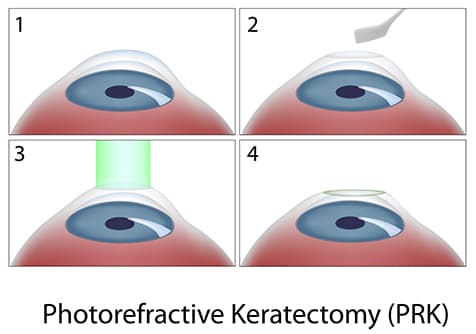
PRK (Photorefractive Keratectomy) is a refractive eye surgery technique in which the cornea (the clear front surface of the eye) is reshaped using the same excimer laser used in LASIK. The main difference between the PRK and LASIK procedures is that there is no corneal flap created in PRK. Instead, we remove the outermost layer of corneal tissue, called the epithelium, prior to resculpting the cornea with the excimer laser. Because the outer layer of the cornea needs time to heal after surgery, you may experience more discomfort post-operatively and vision recovery is more gradual than with LASIK. PRK eliminates the risk of a flap complication, and patients who have PRK get the same visual acuity results as those who have LASIK. This procedure improves nearsightedness, farsightedness, and astigmatism.
PRK surgery is performed once powerful numbing drops have been placed in the eye and a gentle eyelid holder has been positioned. Next, Dr. Edmonds painlessly removes the outermost layer of corneal cells and the excimer laser reshapes the cornea to correct the prescription. The actual laser treatment time is typically less than one minute. Dr. Edmonds then places a soft bandage contact lens on the eye for improved comfort instills anti-inflammatory and antibiotic eye drops. This bandage contact lens is removed after the outermost layer of your cornea is healed, typically on the second or third post-operative day. Some patients may take longer to heal.
At Milwaukee Eye Care, we are confident in our capabilities to provide the best solutions possible to restore your vision so you can live your life to the fullest.










